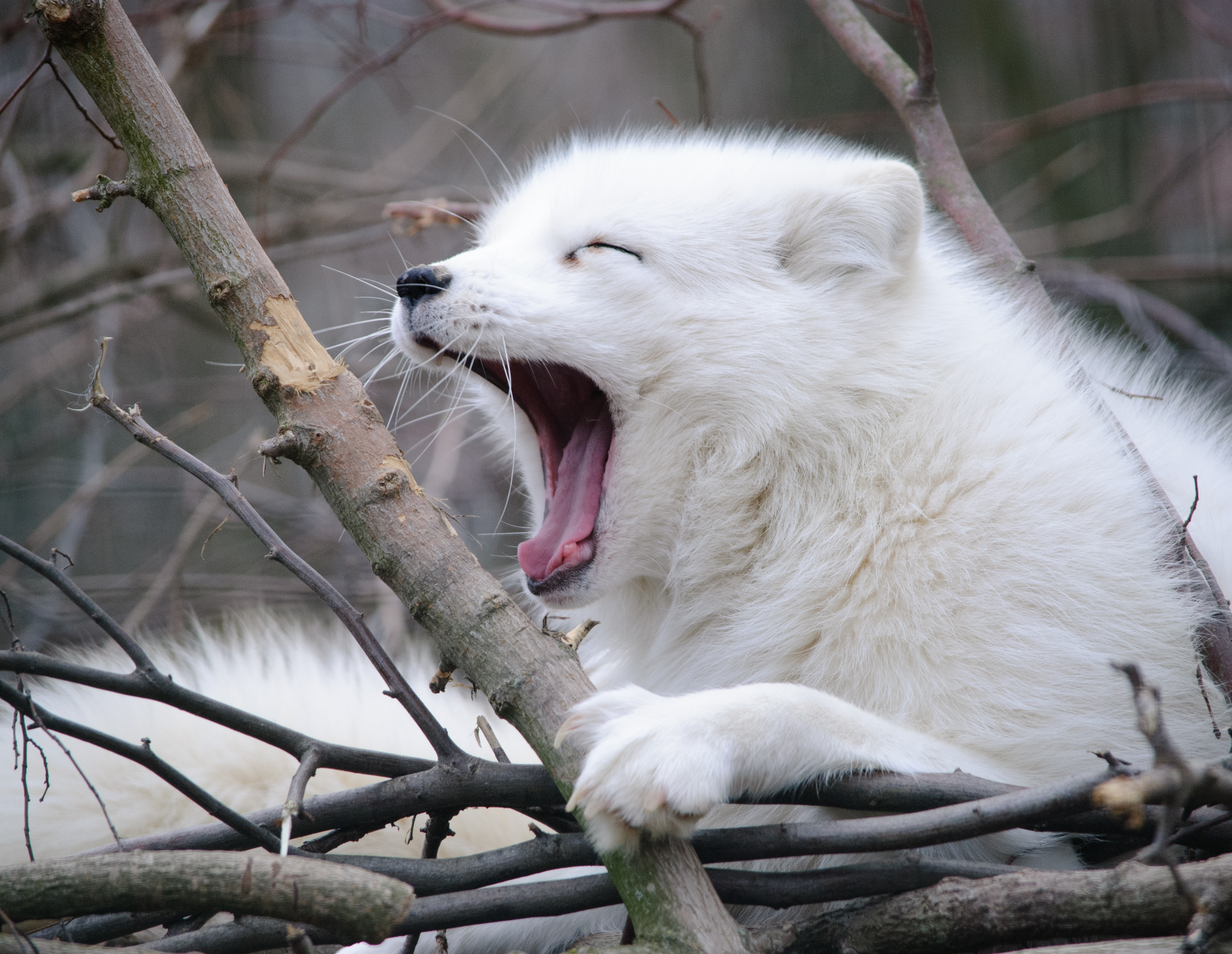
The Arctic Fox has got to be one of the cutest animals around, but they are also extremely tough. These little guys live in some of the coldest regions on the planet, and have had to adapt accordingly! They change colour depending on the season, their compact bodies prevent heat loss, and they are totally comfortable in weather as cold as -70 degrees Celsius! Did I mention how cute they are?
Fashion Meets Function
The Arctic Fox shows a clear disregard for fashion rules, daring to wear white well after Labour Day. In summer the Arctic Fox adopts a neutral brown coat, but come winter, their fur is all white, all the time. This neat trick is more of a survival tool than a fashion statement.
It provides camouflage all year round, in winter’s snow, or the green and brown palette of summer on the tundra. Like swapping your fall jacket for a parka, the thickness of the Arctic Fox’s layered fur increases by 140% in the winter. It is the warmest pelt of any animal living in the Arctic. When they curl up to sleep, their fluffy tails cover their heads like a built in blanket for added insulation.

Size Matters
Arctic Foxes grow to be an average length of 85 cm, with an average weight of 3.5 kg in weight. In comparison, an adult red fox can weigh up to 10 kg.
Besides adding to their incredible cuteness, the small size of the Arctic Fox is also a helpful heating tool. With a short muzzle, short legs, and small rounded ears, their compact little bodies have a low surface area to volume ratio. Less surface area provides less opportunity for heat to escape into the cold.
Metabolism and Other Tricks
These little guys are perfectly comfortable in weather as cold as -50 degrees Celsius, and when it gets colder, they simply slow their metabolism to adapt. Their winter basal metabolic rate is around 25% slower than in the summer. That nifty trick allows them to withstand temperatures as cold as -70 degrees Celsius. It also allows them to survive longer without food; a key tool when food is scarce in the dead of winter.
Arctic foxes have something called “counter-current blood circulation”. It reduces blood flow to their little feet to ensure they never get frostbite. They are also the only canid that grows fur over their little footpads. They need all the protection they can get!

Frozen Meals
When food is scarce in the winter, the Arctic Fox subsists primarily on lemmings and voles. Although their hearing isn’t as good as some other Canids, they hear lemmings from beneath snow and quickly punch through to catch their dinner.
As scavengers, the Arctic Fox will wait around for the carcasses leftover from polar bears and wolves. Their keen sense of smell lets them smell carrion as far as 40km away. Although they prefer meat, from time to time the Arctic fox will stoop to eat seaweed and berries.
In the spring and summer months, they gorge on eggs and baby animals like ring seal pups, and birds left in the nest. During the warm seasons, foxes chow down on as much food as they can to store up enough fat to carry them through their non-voluntary winter fast.
Grand Estates
Arctic foxes prefer to ride solo within their own territories that vary in size from 3 to 25 square km. Mating season is the only exception, between mid-February and April. They reuse dens that can be up to 300 years old! The dens are dug into hillsides and riverbanks. They have as many as 100 emergency exits, and also happen to attract a major source of food – lemmings!
Many years of fox meals fertilize the ground surrounding these old dens and encourage plant growth in an otherwise sparse landscape. Conveniently for the foxes, lemmings come flocking to the plant life around the dens. It’s like getting your favourite takeout meal, without even having to order.
The foxes store excess food in their dens when it’s available. Eggs stay edible for up to a year in these refrigerator-like homes.

The Future of the Arctic Fox
The Arctic Fox population is currently secure. Climate change has brought red foxes up into their territory, creating competition in an already scarce landscape, but so far, so good.
Arctic Foxes have large litters when compared to other species of Canidae, another adaptation for survival. Arctic foxes can have as many as 25 kits in one litter, although it depends on resources and habitat conditions. Females have 12-14 teats to support these large litters, (North American Foxes only have 8)! Arctic Foxes live for an average of 3 to 4 years.
These cute little fur balls will continue to brave the harsh conditions of their Arctic homeland, all the while staying stylish and warm.
